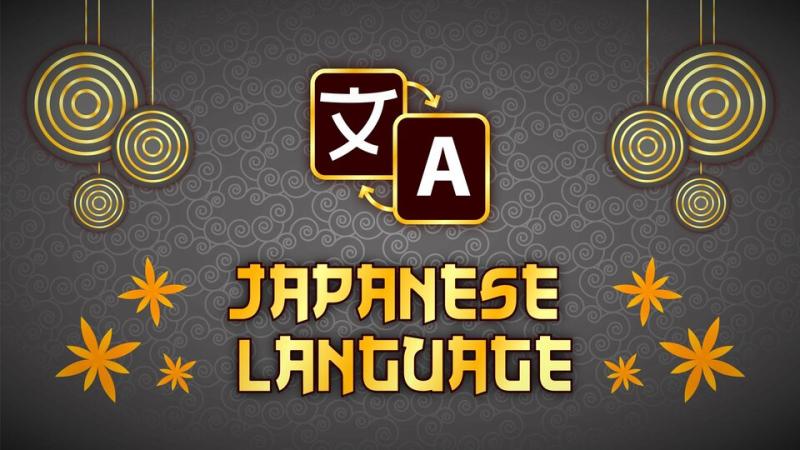Eradicating Dialects Differences through Japanese Language Translation

Japan is famous for everything—technology, anime, movies, manufacturing, etc. Half of our daily products have a "Made in Japan" tag. If we broaden our horizons, then we can witness the bigger picture.
Worldwide companies are relying on Japan's technology for their operations. Therefore, to make a smooth road between native and non-native audiences, a reliable Japanese language translation agency is required.
Furthermore, among the myriad of languages spoken worldwide, Japanese holds a special place due to Japan's economic prowess, technological advancements, and rich cultural heritage. In this post, we are going to explore the art and importance of Japanese language translation, shedding light on its complexities, significance, and impact.
Know The Complexity of Japanese Language Translation
Japanese is renowned for its intricacies and nuances, presenting unique challenges for non-native audiences. Unlike many Western languages, Japanese has a complex writing system comprising three scripts: kanji, hiragana, and katakana. Kanji originated from Chinese characters and represents concepts or ideas, while hiragana and katakana are used for grammatical elements and loanwords, respectively.
Moreover, Japanese language is rich in context and cultural references, making it essential for translators to possess linguistic expertise and cultural insight. The Japanese language often relies on implicit communication, conveying meaning through context, tone, and unspoken assumptions. Translating such subtleties requires a deep understanding of Japan's culture and society.
Different Dialects of Japanese and How Japanese Translation Services Can Solve It
Japan is known for its linguistic diversity, with various dialects spoken across different country regions. The most prominent dialects include Kansai-ben (spoken in the Kansai region, including cities like Osaka, Kyoto, and Kobe), Tohoku-ben (spoken in the Tohoku region in northern Japan), and Kyushu-ben (spoken in the southern island of Kyushu). These dialects can vary significantly regarding vocabulary, grammar, and pronunciation, but expert translators manage them effectively to produce proper and culturally relevant work.
Understanding the Challenges and Solutions of Dialectal Differences
Challenge 1:
One of the key challenges posed by dialectal differences is the need to choose the most appropriate language variant for a given audience. While standard Japanese (hyojungo) is used in formal contexts such as news broadcasts and official documents, regional dialects are prevalent in everyday speech.
Solution 1:
The above challenge requires a sophisticated solution consisting of a translation agency that accurately reflects the tone and nuances of a specific dialect, especially in contexts where authenticity and local flavor are essential.
Challenge 2:
Another challenge is the potential for misunderstanding or miscommunication that can arise when dialectal differences are not correctly accounted for in translations. Certain words or phrases may have different meanings or connotations in different dialects, leading to confusion or unintended humor if not translated correctly.
Solution 2:
Expert translators possess exceptional linguistic skills to witness dialectal differences and adapt them to the native audience.
The Role of Japanese Translation Services in Addressing Dialectal Differences
Japanese translation services have the power to help in addressing the challenges of dialectal differences. By employing translators familiar with the nuances of regional dialects, these services can ensure that translations are accurate and culturally sensitive.
One approach is to provide translations that preserve the flavor of the original dialect while making the content accessible to a broader audience, which may involve using footnotes or annotations to explain regional terms or expressions that may be unfamiliar to non-native speakers of the dialect.
Another approach is to adapt the translation to reflect the target audience's linguistic expectations. For example, a translation aimed at a general Japanese audience may use standard Japanese. In contrast, a translation intended for a specific region or community may incorporate elements of the local dialect to enhance relatability and authenticity.
Also read: Russian Translation Services: The Need of the Hour
Leveraging Technology for Dialectal Translation
Advances in technology have also facilitated the translation of dialectal variations. Machine translation tools with algorithms trained on diverse language data can now recognize and reasonably translate regional dialects. These tools can be handy for providing instant translations in various dialects, catering to the needs of a diverse audience.
However, while technology has advantages, it is essential to remember that machine translation may have a limited capacity to capture regional dialects' subtleties and cultural nuances. Human translators with expertise in specific dialects are still invaluable for ensuring translations' quality and cultural appropriateness, especially in sensitive or nuanced contexts.
The Significance of Accurate Japanese Translation
Accurate Japanese translation can make or break a deal in business. Japan is a top-most player in global trade, renowned for its new technology, automotive industry, and precision engineering. Businesses looking to enter the Japanese market or collaborate with Japanese companies must ensure that their communications are accurately translated to convey their message effectively.
Japanese translation is relevant in diplomacy and international relations, fostering understanding and cooperation between nations. Proper translations of diplomatic documents, treaties, and agreements are essential for maintaining harmonious relations and resolving conflicts.
In academia and research, professional translators assist in the exchange of knowledge, thoughts, and ideas between scholars and researchers worldwide. Japan has significantly contributed to various fields, including science, technology, and literature. Access to precise translations of Japanese scholarly works enables scholars from diverse linguistic backgrounds to engage with Japan's intellectual heritage.
The Impact of Japanese Translation on Culture and Society
Language is essential to cultural identity, and accurate translation helps preserve and promote Japan's rich cultural heritage. Japanese culture has captivated audiences worldwide, from literature and poetry to traditional arts and cinema. Translating these cultural treasures into other languages allows people from different backgrounds to appreciate and understand the depth and beauty of Japanese culture.
In entertainment and media, professional translators have played an essential role in the worldwide popularity of anime, manga, and video games. These forms of entertainment have garnered a massive international following, with translations enabling fans worldwide to enjoy Japanese pop culture in their native languages.
Post Your Ad Here
Comments